Saturday, June 28, 2014
Disappointing in many ways.
BRAD PITT – PETER O’TOOLE – TROY – 2004
The Iliad and Achilles have
always been fascinating mirrors to the western mind. This rather short version
of the Trojan War is done for a popular audience and it shows. It is also done
for a modern audience and it has to be short. It sure is shortened.
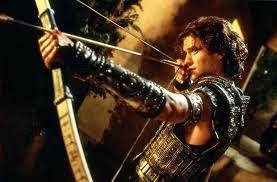
We could list all the essential events
that are missing from the human sacrifice of Agamemnon’s daughter by Agamemnon
himself to get from the “Gods” a favorable wind to go to war. And the “Gods”
did not substitute a goat or a ram to Iphigenia as another “God” will do when
Abraham was going to sacrifice his own son, though we will never know if it was
Isaac or Ishmael, since there are two versions running around, one behind the
other, both trying to catch their own tails in their own teeth. Human sacrifice
is part of humanity, has been and will be as long as wars and the death penalty
exist. The Celts burned the guilty alive in baskets hanging from trees. The
Romans dipped people in boiling oil or crucified them along the roads. The
medieval church burned witches and wizards at the stake, or fried homosexuals
in a frying pan with oil in France,
or grilled homosexuals on a grill without any oil at all in England. And
what about these marvelous death penalties that do not work or take a long time
to be effective in our modern civilized countries? We regret a great show like
in England under kings and queens up to Elizabeth I when a convicted criminal
would be drawn by horses to the Bartholomew Fair ground on the day before the
Bartholomew Fair to be hanged there but not to death, brought down, drawn in
the meaning of eviscerated, quartered and finally beheaded, the head being
picked by the hair and directed at the joyful gleeful crowd because the brain
and the eyes can see up to seven seconds after the beheading, so that the
guilty victim can see the people rejoicing at his or her death.

This film is very clean indeed.
The film is also totally silent
on the enormous stake of this war. They reduce it to power for Agamemnon. That’s
short. Troy controlled the main Indo-European
route from Iran to Europe
through Anatolia. That was one of the two
immigrating routes that produced our modern Europe.
Along this route came all kinds of goods but also knowledge like cattle raising
and agriculture and metal industry (or what it was at that very beginning of
the metal civilization) and religion. The Greeks wanted to take the control of
this commercial and cultural circulation to Europe
to make a profit on it. That is not power, that is commercial dictatorship.

The film is totally silent on the
fact that the beautiful Greek religion was in the process at the time the Iliad
was being written of integrating some religious and cultural elements of the people
who had been in Europe since 50,000 years ago and who represent 75-80% of modern
European DNA, viz. the Turkic population known as Cro-Magnon or the
Gravettians, and some others still known today as the Basques. By reducing the
historical stake of the Iliad and Ancient Greece, we can forget about the fact
that the Indo-Europeans conquered the whole of Europe with what will never be
more than a 20% minority in Europe.
What saves the film then?
In fact only two actors: Brad
Pitt as Achilles and Peter O’Toole as Priam. The others are secondary and most
of them mediocre. Brad Pitt gives some taste to the story, though of course the
particular relation between him and his cousin Patroclus is entirely unrevealed
and he even appears as a gallant person who saves a virgin teenage woman from
the grubby and dirty hands of soldiers. On the other hand Peter O’Toole gives Priam
the dignity and the force this old king must have had to have to be able to go
and beg for the body of his own son killed in fair fight by Achilles.
The famous Trojan horse is also a
nice character and the trick is surprising in the fact that it worked, at least
so does the legend have it.
Finally we could say the film
insists a little bit too much on couples of brothers. The two Greek Brothers,
Agamemnon and Menelaus on the Greek side and the two Trojan brothers Hector and
Paris on the Trojan side. And all that for a woman, Helen, who was married to
an old man, Menelaus, and fell for a more or less young teenager, Paris. But do
not expect any love in all that. It is only a question of possession for
Menelaus and intercourse for Paris.
Helen just has to play the game of satisfying the impulses of the man who
possesses her. The film even manages the escape of Andromache, Astyanax, Helen
and Paris, more or less and at least. Since Paris has managed to kill Achilles, he is not
even a hero and the fugitives are nothing but assassins. In other words the
film is doomed to have no morality.
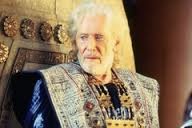
Some beautiful battles and some
very impressive ramparts, city walls, palaces and temples, but not much more,
and the back side of Brad Piptt a couple of times for the perverse
cheese-addicts.
Dr Jacques COULARDEAU
Amazon.com
2 of 7
people found the following review helpful
There
is no war that can be redeemed,
May 29,
2004
By
There is no war that can be redeemed
This film is a beautiful show
though it will not in anyway change the face of the world. It shows that war is
a horrible adventure in which motivations are absolutely perverse, perverted
and hypocritical. One goes to war for a woman who was stolen from him. Women
are nothing but homestead possessions. One goes to war to increase his power by
conquering people who resist him.
War is a power game that is won
or lost after many deaths of soldiers and civilians who are not supposed to
question any point but only to obey. War is blind obedience for the soldiers
and blind submission for the civilians. One goes to war for the pleasure of
fighting to show his prowess, his courage, his « invincibility » and yet he
will be killed in the heart of victory because no one is invincible, no war is
a clean parade on an empty boulevard.
Then supplementary motivations
appear during the fighting or the discussions and rivalries among chiefs. It is
such events, like the killing of a cousin, the manhandling of a prisoner, or
any dramatic event, that can change the course of a war and bring into the
battle people who wanted to remain neutral. War is a big pot in which spiders
and predators are cooking, some enemies, some allies.
Finally most soldiers are going
into the war with only one objective: looting and taking advantage of the
situation to satisfy their basic and repulsive instincts to hurt, torture, maim
and enjoy the barbarity of such acts. Finally a war is always lost in the long
run and the victors are vanquished as Handel would say in Alexander's Feast. A
few of the princes of Troy will escape and they
will create Rome who will eventually conquer Greece
and submit them to their power.
History is always a vengeful game
if the will, interests and peace of the people are not taken into account.
Finally a war can only be won through a genocide : kill all your enemies and
you will carry the day. This film is the exposure of war as a crime against
humanity. Yet there are in this film a few, very few, but a few nevertheless,
scenes that redeem such horror.
The « invincible » Achilles is
vanquished by a sudden and unexplainable love that leads him into a mistake and
a trap, and there is no escape, no pardon, no tolerance, no considering the
honorable actions of before. He is an enemy, so he has to be killed. Everyone
will like the Trojan horse immensely that shows a war is always won through
perfidy, ruse, deception and the exploitation of the gullibility of the
opponents.
Nothing has changed except that
we are more conscious and sensitive to crime and perverse actions, and that we
have media who will expose any trespassing from some guideline. War is based on
lies but the media have the responsibility to expose such lies and when they
are exposed the war is lost for the liars who are exposed as such at the same
time. Yet the film is short on the real stakes of this war : the control of
eastern commercial routes and the danger such a strategic position represents
for those who are thus controlled by this commercial power.
Dr Jacques COULARDEAU
# posted by Dr. Jacques COULARDEAU @ 7:22 AM
0 comments

Sunday, June 22, 2014
La guillotine et l'impuissance de la nouvelle vague: même pas de l'agit prop.
CLAUDE LELOUCH –
LA VIE L’AMOUR LA MORT – 1969
Après la victoire sociale de mai 1968 – en France – et la défaite politique
de juin 1968 – en France – sans parler de celle de Prague un peu plus tard et
de la catastrophe de l’élection de Nixon aux USA, sans même mentionner les
assassinats de Robert Kennedy et de Martin Luther King, un peu plus tôt, les
intellectuels français et les artistes français sont restés désemparés comme
deux ronds de frite oubliés derrière une malle, surtout que l’échec politique
du référendum de De Gaulle fut le fait de Pompidou et de quelques autres qui
surent tirer les marrons du feu dès 1969. Alors la gauche n’avait plus que ses
yeux rouges et noirs pour pleurer, et Jacques Duclos était la pleureuse
officielle.
Ils sortirent alors les problèmes sociétaux de fond, comme dans ce film la
peine de mort. La nouvelle vague qui se voulait apolitique fut bien obligée de
sortir du bois et de devenir idéologique sinon il ne leur restait plus que le
communisme pur et dur, le communisme de guerre à la Brejnev l’éteignoir. Et
Waldeck Rochet était en hibernation dans un hôpital et Georges Marchais prenait
le pouvoir. En bref le paradis.
Ce film est donc nouvelle vague sur sa première partie qui montre la filature
et l’arrestation d’un homme sans que jamais pendant cette première moitié on ne
sache de quoi il pouvait bien s’agir. Lelouch joue sur la focalisation de la
caméra sur le premier plan ou sur l’arrière plan et en plus truffe cette partie
de gros plans dignes de la télévision. Il joue bien sûr sur la couleur pour le
monde extérieur à la prison et le noir et blanc pour la prison, et il ne fait
pas dans le détail : le Quai des Orfèvres, le palais de justice derrière
et la prison de la Santé.
Mais après la première lecture des délibérés du jury qui ne donnent que le
numéro des questions mais pas les questions elles-mêmes, on ne sait toujours
pas les crimes de ce pauvre Tolédo. C’est alors que la deuxième partie du film
permet de passer à un film post-soixante-huitard et donc à entrer dans l’idéologie.
La police n’est plus aveugle et la justice brutale, ou vice versa. On a les
crimes commis devant nous, les prostituées tuées par impuissance sexuelle de ce
pauvre homme. On ne saura jamais pourquoi il est impuissant dans ses actes avec
les prostituées, alors qu’il est père d’une fillette, marié et qu’en plus il a
une amante qui semble très satisfaite.

Là ce sont les psychiatres qui sont totalement aveugles, et j’ai envie de
dire impuissants mentalement, intellectuellement et scientifiquement. Comme l’homme
est conscient de ce qu’il a fait, il est donc responsable et on se contentera
de cela comme on donnera une fessée à un enfant de deux ans qui pisse au lit
car il sait ce qu’il fait donc il le fait exprès. Maintenant pourquoi est une
question qu’un psy raseur de tête et malaxeur de cerveau ne se posera pas.
Alors il ne reste plus qu’à dresser la guillotine dans la cour de la prison
de la Santé, dont j’ai si souvent longé les murs, et se dire que l’île de la
Cité est bénie et donc policièrement justifiée et judiciairement juste puisque
la cathédrale Notre Dame est juste en face. M’enfin comme dirait un certain
Gaston.
Ce film est donc pathétique quand il témoigne du
dilemme artistique et politique des gens de la nouvelle vague avec Jean Paul Sartre
en tête qui se fait maoïste tant qu’on y est. Et ne parlons pas des trotskistes
comme Jospin et bien d’autres, et tout cela pour ne pas être communistes :
la fuite en avant dans la marge pour mieux plus tard retrouver le milieu du
chemin et la conformité réformiste qui ne les mènera pas à Rome mais en
Hollande.
C’est toute cette catastrophique frustration qui ressort aujourd’hui dans
les derniers soubresauts des légions révolutionnaires de la SNCF et des
intermittents. Mieux vaut mourir et faire couler le bateau avec nous que d’accepter
un compromis aussi bon soit-il, aussi inéluctable soit-il, aussi inévitable
soit-il.
C’est comme cela que nos lendemains sont comme des lampadaires : ils
ne marchent pas, ils ne sont que des pissotières pour chiens et la lumière qu’ils
diffusent sent le maquillage vital purement de surface. Non ce n’est pas la
lumière de l’esprit ni de l’âme, encore moins de l’amour ou de la liberté, car
sur les bancs publics sous les lampadaires on ne trouve plus des amoureux qui
se bécotent mais des SDF qui s’ankylosent.
Dr Jacques COULARDEAU
# posted by Dr. Jacques COULARDEAU @ 2:07 PM
0 comments

Saturday, June 21, 2014
J'en ai attrapé un gonflement de la prostate
JEAN-LUC GODARD –
LES CARABINERS – 1963
Plus nul que moi tu meurs.
C’était un temps où le cinéma français étant largement subventionné, il
pouvait se permettre de produire à peu près n’importe quoi. La télévision noir
et blanc commençait tout juste à devenir populaire et en 1963 la concurrence
avec le cinéma commençait tout juste à se faire sentir. Les propriétaires de
salles firent même grève un après-midi pour protester contre la taxation de
tous les sièges des salles, occupés ou non, et obtinrent gain de cause et la
taxation passa aux billets effectivement vendus. J’ai vu un Phèdre gratuitement
grâce à cette grève qui devait être un jeudi après-midi puisque je n’avais pas
de cours.

Et ce fut la Nouvelle Vague qui décida de ne faire que des films qui soient
totalement antinomiques par rapport à ce qu’Hollywood faisait. Et c’est ainsi
que mis à part les films d’action de Delon et Belmondo et les films comiques de
Louis de Funès et Bourvil, le cinéma français commença à s’enliser dans une
boue moribonde et mortifère qui laissa le champ libre au cinéma américain. Dans
ce magma informe des gens comme Jean Delannoy eurent tout le mal du monde à continuer
à travailler car ils refusaient de faire du nouvelle vague, du Françoise Sagan
et même du Truffaut ou du Chabrol. Dans tout ce fumier il y avait en plus du
bon et du mauvais et la série B était vingt étages en sous-sol plus bas que ce
film de Godard qui vole au ras des pâquerettes.

Car, soyons clair ce film est un navet, peut-être un tout petit peu plus
gros que cela, disons un rutabaga. C’est ringard, c’est dépassé, c’est
insignifiant, c’est insensé, c’est plus con-dé-plaisant que déplacé, même les
tondues de fin de guerre.
Mais il est évident qu’historiquement, que dis-je archéologiquement, mais
où ai-je la tête anthropologiquement ce film est un moment capital dans la
chute infernale du cinéma français subventionné jusqu’au plus profond des
chaussettes, ou serait-ce des bas ? Et si le cinéma français commence tout
juste peut-être depuis une dizaine d’années à ressortir la tête de l’eau c’est
qu’ils ont enfin essayé d’apprendre à Hollywood comment on peut faire un film,
mais avec dix fois moins de moyens, et autant d’imagination que l’oiseau en
cage de Jacques Prévert. Heureusement qu’il y a toujours un cancre Godard pour
ouvrir la cage.

Si vous le trouvez, ce DVD, essayez de le regarder pour le plaisir d’avoir
la nausée, mais pas celle de Sartre devant une racine au Jardin du Luxembourg,
la vraie nausée devant un étron non doré de quelque César égaré dans un parking
souterrain. Mais je divague, oui certes je dis-terrain-vague et je vois le
jardin de Versailles, comme je regarde Les Carabiniers par Jean Luc Godard et
je vois un chef d’œuvre qui durera pour les siècles des siècles, jusqu’à ce que
Dieu lui-même en attrape une crise de fou rire dérisoire.
Au rasoir que je vous dis, au coupe chou que nous devons aller dans ces
arrières ruelles des friches urbaines de cerveaux malades d’illusions
cancréliques, de cancrelat + colique = diarrhée diurétique.
Dr Jacques COULARDEAU
# posted by Dr. Jacques COULARDEAU @ 1:10 PM
0 comments

India's Supreme Court is still stronger than this film
ONIR – MY
BROTHER NIKHIL – 2005
The subject of the film is about something
many people have gone through: the contamination to HIV, the development of the
disease of AIDS and the ultimate death of the patient. Personally I do not want
to count the victims around me because that would be too sad. Some died of
pulmonary infections. Some died of a vicious attack on their nervous system.
Some died of Karposi skin cancer. The types and modes of death were incredibly
varied. For nearly 15 to 20 years the available treatments did not do much
except slow down the end and soften that end. We now have a treatment that can
lengthen the life of the patients seriously, but it is no cure yet. But luckily
we are far beyond Reagan’s declaration that it was the punishment of god
against homosexuals.
In the film we are in Goa and we are dealing with a State Champion in swimming.
He finds himself HIV positive. He is expelled from the swimming team: one day
he gets into the water and everyone else scrambles out. He is totally rejected
by his parents, his father beating him up and his mother telling him that since
he was premature at birth she wishes he could have died. He has only one refuge
and it is Nigel, his friend. He is arrested and definitely roughed up by the
police who took him to the hospital where he is isolated in the sanatorium,
alone and totally abandoned and unable to leave. He suffers from the rejection
because of the disease, which is absolutely outrageous because everyone has the
right to benefit from medicine equally, at least officially. But he also
suffers from the rejection because he is at once revealed to be a homosexual.
Note that’s the only word used in the film and the word “gay” is never used.

At this point we are deeply
engulfed and drowning in some colonial heritage that India’s supreme court has still not
been able to declare anti-constitutional Here is their latest decision:
«
IN THE SUPREME COURT 0F
INDIA
CIVIL
APPELLATE JURISDICTION
(ORDER XL,
RULE 1)
REVIEW
PETITION (CIVIL) No. of 2014
(Against the Order dated
11.12.2013 in Civil Appeal No. 10972 of 2013 (arising out of Special Leave
Petition (Civil) No. 15436 of 2009) passed by this Hon'ble Court: Sought to be Reviewed)
IN THE MATTER
0F:
Dr. Shekhar
Seshadri & Others . . .Petitioners
Versus
Suresh Kumar
Koushal & Others .
.Respondents
. . . This Hon'ble Court, by the impugned judgment,
set aside the judgment of the High Court and held that Section 377 of the
Indian Penal Code was constitutional and that it applied to acts, irrespective
of age or consent of the parties involved. »
This Section 377 of the Indian
Penal Code is directly inherited from the old British colonial penal code. India has not
yet been able to get rid of her colonial heritage and past. We have here a
typical post colonial situation.
The consequences are drastic.
Nikhil is in locked up detention in total isolation in a sanatorium where he
gets minimal care. His family is victimized and ostracized in the city to the
point of them having to leave, though this reveals the total lack of courage of
the parents, since the daughter supported by her fiancé decides to stay and
look for a lawyer and fight. Nigel as Nikhil’s partner is forced to go through
a test, which is in a way perfectly sane and he should have decided to do it
himself, and he finds out he is healthy. After the first difficult situation
between the two men, Nigel becomes supportive to the end.
It is difficult to find a lawyer
and there is no real legal attack possible if there is no popular support. So
they start a public campaign. In that situation Nigel’s home will be raided and
looted. But they win the battle. Nikhil decides not to fight against his boss
who does not want to reinstate him in his job and he develops a musical career
for a couple of years.
Then the film shows the slow
ending of this life. It is in this part that the film brings the mother first
to apologizing for her violent declaration. It will take a lot more time for
the father who will finally accept for Nikhil to come back home when he has
reached the final phase of the disease and is no longer able to have a normal
activity. Nikhil will thus die a deeply emotional death in the arms of Nigel
who would have gone to sleep curled up around him waiting for that magic moment
when the sun comes up at daybreak, this moment becoming the metaphor of
Nikhil’s death.
The film is absolutely beautiful
and deeply emotional. It was shot in 2005 and it has not been able to prevent
the erring position and ruling of India’s Supreme Court in 2014 as
quoted above. We have to keep in mind India is assuming its colonial heritage
instead of questioning it and is now far behind all western countries, or
nearly, and all democracies respectful of their own democratic order that
recognize the right to any adult to have and practice any sexual orientation
they want as long as it does not endanger the integrity and life of their
partners, with of course the special case of minors who are not supposed to
have sexual intercourse with adults of any type up to a certain age set by the
law.
Dr Jacques COULARDEAU
# posted by Dr. Jacques COULARDEAU @ 2:24 AM
0 comments

Friday, June 20, 2014
Post Traumatic Colonial Disorder in a globalized world
ONIR – I AM –
AFIA – MEGHA – ABHIMANYU – OMAR - 2011
What makes that film special?
The four stories in themselves
are rather simple at world level if we look at them from the middle class bland
and neutered point of view.
Afia is a woman web designer who
wants to make a child from a sperm donation
but cannot accept the idea that the donor has to remain unidentified
otherwise it no longer is a donation. And her breaking the rules is in fact
introducing suffering – and we mean the concept “dukkha” – in the donor that
she rejects just as easily as she tears up his phone number. She is not a liberated
woman, she is a completely self-centered and in many ways egotistic woman. She
is not going to change the world.
Megha ran away when the crisis
hit Kashmir some years ago and she comes back for a visit and finds out that
the people who stayed behind and were her friends or her family’s friends are
in fact in many ways resenting her coming back with her “veil-less and sexually
unreserved evolution” that is provocative to the people who stayed behind and
tried to build up a compromise between themselves and the Indian authorities,
even if it meant regular humiliation. To go away from a crisis is never solving
the crisis and is absolutely not justified for those who stayed behind and
tried to find a solution.
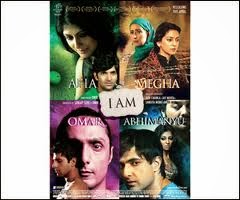
Abhimanyu is one story that
really touches some universal problem, the case of a pedophile stepfather who
takes advantage of his stepson every single time his wife, and his stepson’s
mother goes away for a couple of days on business (which makes that family, and
that woman, upper middle class). In fact it shows the stepson comes to the idea
it is in a way normal and he lives with it and tries to keep the fact to
himself because somewhere he knows it is not normal and he cannot tell. One day
though, his stepfather on his deathbed, or close to his death, he finds the
courage to tell one woman friend of his and then to go with her to his mother’s
for a last visit to his stepfather whom they find dead and already incinerated.
The son then has the courage to tell the mother but she no longer is HIS
mother. She is THE mother, an anonymous distant and totally locked up woman who
does not hear her own son and his suffering. So there is no other way but to go
away and maybe think THE mother might become HIS mother again one day and
accept what he has told her.
Omar, the last story, is universal
for sure but it is definitely both sad and somewhere revealing. The main character
is some gay film director who one day just falls in the trap of some hustler
who pretends to be looking for a proposal in the film industry. The film
director is thus manipulated into having some pre-sexual contact in his car
when a cop comes and manages to blackmail the film director out of 100,000
rupees and since some is missing he takes Omar, the hustler into custody. But
some time later the film director finds the hustler doing what he is best at
doing, hustling on the street. The film director confronts him and that is all.
It reveals a gay man in India
has to be prudent because the hustlers are doing a job that is dangerous and
that these hustlers have to have some agreement with the cops to be able to
practice without too much trouble and the only way is to fool some rich
customers.
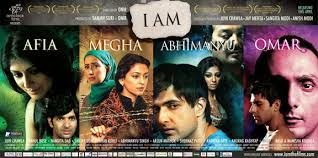
What does this film show about
modern India?
First we only see the middle class, and even some upper middle class. Don’t
expect to have even one glimpse into the fate of the Dalits. Second we find out
this society is evolving very fast in standards and in means and that pretty
soon it may be, at least in its middle class, comparable to the West, though
the poorest layers of the Indian society are hardly moving up, particularly the
Dalits, though some are getting some improvement because the Christian churches
and the Buddhists have done a lot to promote them in education, but that is not
shown in the film. Third this Indian society is in a post-colonial situation
and people are the victims of a Post Traumatic Colonial Disorder that finds its
way out in various fields and domains but particularly in the ability to
establish sane and balanced relations with other people. This gives a
completely different approach.
Afia cannot accept to have an
equal relation with a man because she inherits from a very old situation that
has always put women down and she cannot conceived her freedom as a woman with
a man, but only by dominating and frustrating the man she encounters along her
personal and exclusive path. Megha lives exactly the same problem but this time
in a Moslem context and she cannot understand and accept that religion is part
of her Kashmiri friends, because she has run away from Kashmir
and she has abandoned that religion and its veils and other restrictions. Abhimanyu
first and his mother second cannot face the fact that there used to be a time
when pedophile stepfathers were the protected or at least tolerated norm and
that today things have to change. Finally Omar is a typical exploiter of such a
postcolonial situation in order to be able to do what he wants, have gay sex
and make a living out of it without a pimp, and yet he deals with the cops as
if they were his pimps.
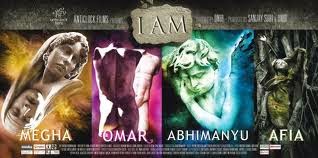
Some of these postcolonial
situations are in fact a lot more universal than we may think and they are
quite common still in western countries, and quite worse in some countries that
have not yet been able to face their postcolonial and post traumatic situation.
Then the film becomes a signpost for what has to be done in all countries and
in the world to finally enable women, Moslems (or any religious or cultural
minority), children and gays (or any sexual minority) to be free and not
exploited by anyone. Otherwise these people who fall in the traps of
exploitation will be the victims of more or less severe PTSD.
A film to watch and try to
meditate upon.
Dr Jacques COULARDEAU
# posted by Dr. Jacques COULARDEAU @ 7:52 AM
0 comments

Thursday, June 19, 2014
The strength and power of the mind are missing here
DREW DELLINGER – MOVE METTER TO THE MILKY WAY, A BOOK OF
POEMS – WHITE CLOUD PRESS, ASHLAND,
OREGON, 2011
The language is simple, the tempo
is fluent, the music is cool and soft. This is liquid poetry that seeps down
into our minds as if it were the language of some angelic disincarnated lover
with whom anyone can have an adventure, a venture or even an affair because
this angel is beyond any sexual orientation. And yet that poetry has some
surprising sides.
The poet’s objective is to make
love to (the poet’s male side) or with (the poet’s female side) the Milky Way
and the Moon. The Sun is a bIg fiery father figure that looks at you, little
human non-entity, having intercourse with the Moon, the triple goddess,
Demeter, the thrice-crowned goddess (in Shakespeare’s words), Artémis or Diana
the goddess of life and life-giving, Selene the goddess of the moon and the
night, Hecate the goddess queen of the underworld, hell, the Queen-dom of the
dead. I must admit it could be a very powerful love scene but you, little human
being, you would be the toy of these three women, and they might even break you
or tear you apart and you way end up in pretty bad shape. But apparently the
poet accepts that fate as if it were whey.

The small human being who says I,
me, myself and I, in the poems, at times disguised under a conventional you, is
maybe a man but he wants to let the whole cosmos flow into him. He is the
receiving vessel, the basin or even the tub into which the whole universe can
run and then overflow. As such he is somewhere a woman having an affair with
the moon repeatedly said to be a woman, a triple woman, and systematically
associated with death. The poet is a morbid and death-fascinated feminine male.
And that cult of the moon and the night in these poems is definitely death
oriented though the sexual orientation of it is at least imprecise.
The next surprise is the strange
call for the oldest ancestors and the great great grandchildren of the I who
speaks, and his desire to create or cultivate perfect and absolute continuity
from the most distant past to the most distant future. This is impossible since
everything is ever changing, as the poet should know since he quotes the
Buddha. But he does not seem to dominate or control the basic concepts of it.

The next surprise is the call
against corporations in a poetry that is NOT agit(ation)-prop(aganda). The call
against the military-industrial-petroleum complex is made weak by the style and
the tone that are not Brechtian, or anything close to HOWL by Allan Ginsberg. A
weak squeaking mouse has little impact under the crushing paw of an elephant.
What’s more it is in complete contradiction with the reference to Krishna, Buddha, the Eightfold Path of Enlightenment,
etc… This is here a call to some power-game against the powerful politicians
and industrialists, but the references are discarding this power game, are
calling for a mental regeneration and I do not find it in this call here in
these poems.
Then the call for a change is
warped by the fact it attacks the Supreme Court in the supremely hypocritical
Gore un-election case, or the hypocritical lies of warmonger Bush, a bush that
is not burning by itself but that is burning everyone that is not standing at
attention or crawling in the dust, though without such forceful images. It is
meek. His change needs a power struggle and it cannot be peaceful, serene and
easy-going if it is not seen as having to occur first in our own individual
personal minds.
This comes from the lack of a
deeper penetration of the mental intellectual and spiritual dimension of man.
The reference to Buddha is touristic, like that to Jesus or Gandhi. The modern
world of the Internet enables anyone to refer to anything without any deeper
knowledge and experience of whet they are talking of and about.
Man – and here the poet – becomes
a sign post on the Milky Way. But have you ever seen a sign post following the
way it indicates, be it a Milky Way or any other Gold Way of the yellow brick road?
Dr Jacques COULARDEAU
# posted by Dr. Jacques COULARDEAU @ 7:36 AM
0 comments

Tuesday, June 17, 2014
Dexter has replaced his criminal balls with creamy doughnuts
JEFF LINDSAY –
DEXTER’S FINAL CUT
The author, Jeff LindSay, sold
his character to television where Dexter became the main hero of a series that
lasted seven seasons at the end of which he officially died, but did he really
die or just disappear? No one will ever know, except the audience if a new
season appears one day.
It depends a lot on what is going
to happen to Dexter in the mean time as a book character. And the seventh book
has just been released, or has at least finally reached my desk in my distant
mountains. The title may mean he is going to be finished, our Dexter, and this
volume is the last one. Or it may mean something more down to earth as we are
going to see.
Jeff Lindsay had already parted
with the time line and events or circumstances of the TV series in the last
volumes of his book series, and that was good though confusing since we had two
Dexters. Now the TV Dexter is dead Jeff Lindsay can recapture his character and
go back to his own business. But this volume has to settle accounts with TV.
Jeff Lindsay cannot obviously
blow up the TV network that exploited his character to death (he made quite a
pile of green backs from the adventure), but he can bring a TV series in his
book and settle accounts with television in his book. Television and the series
in the book are hijacking Dexter from his standard life and his not so standard
pastime and turn Dexter into a counselor to some TV star, Robert Chase, chase
me if you can, and his sister into an assistant to the second TV star, Jackie
Forrest, and don’t get lost in that forest with two r’s.
Jackie Forrest is stalked by some
criminal mind who becomes a serial killer to force Jackie Forrest to see him
with her own eyes and to accept to acknowledge his existence by becoming his
object, his thing, though he does not know exactly what he wants from her,
except absolute servitude and submission. Dexter then accepts to look after her,
be her protective blanket, and sure enough he gets rid of the menace. But
another appears from inside the shooting perimeter, nothing to do with guns and
everything to do with cameras.
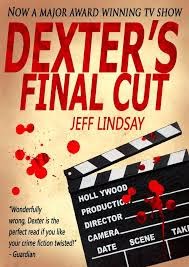
But things are vicious and I won’t
say more about that side of the book, except that Jeff Lindsay eliminates the
stars with a snuffer one after the other. But that is not enough as for
vengeance. So he manages to depict the female star as being vain, superficial,
self centered, obsessed with sex and of course she traps Dexter and he falls,
and he adds so many other qualities nurtured in her by her stardom that she
becomes a monster, and he piles up the incredibly non-ecological and uneconomical
conditions that surround her. He manages to add some pedophilia in the star
system, a man liking little girls, and everyone is blind to it because he is a
star and has a high TVQ, he is popular and he attracts a big audience. At the
same time the pedophile is a daily predator on all girls around and he has the
bad taste and the silly idea to capture Dexter’s own stepdaughter. Poor darling
man, you’re dead, that’s for sure, when Dexter catches you. I hope you can
swim, or at least your body parts can.
Dexter appears here as having lost
his main concentration and objective and he becomes the play toy of a female
star who promises to give him a career, at least for the time of the shooting
with an under-five part, and he is vain enough to dream he was going to have a
career in Hollywood and why not an Oscar. Ready to abandon everything and
everyone to follow the call of the stars, at least till the kidnapping of his
stepdaughter calls him back to reality, the dusty and muddy reality of Miami.
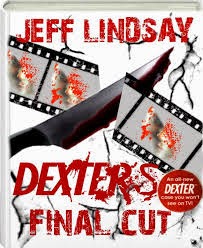
If you want to know whether
Dexter is dead or finished or terminated at the end of this volume, or whether
there will be another volume soon, you will have to read the book. In spite of
the false tracks on which Jeff Lindsay will set you, you can surmise or
conjecture the truth rather fast, at least if you have some practice in
thriller-reading. I find the book at times slightly too slow, maybe even
verbose, when Dexter loses himself in his newly found human sentiments for the
female star that tries to illuminate his vanity and capture his attention.
But, well, it is funny in a way.
I just hope there will be another volume and it will be slightly more dynamic. The
final cut is of course the final “cut” order he gets from the director or show-runner
or whoever that man may be – and HE might be a woman seeing how much vodka HE
drinks – at the end of the last take of the last scene of his under-five part, and
the book opens with that last cut. But that last cut will cut Dexter to the
bone for sure and that will be a good thing because he is really made dumb and
besotted by the skin, flesh and various body part of a female star-object, a
perambulating inflatable doll in a way, inflated by whatever TVQ the audience
projects into the outside skin of that evanescent being.
Dr Jacques COULARDEAU
# posted by Dr. Jacques COULARDEAU @ 1:59 PM
0 comments

Sunday, June 08, 2014
Very spiritual but not all canonical
ELIZABETH WRAY – CLARE ROSENFELD – DOROTHY BAILEY – JOE D.
WRAY – TEN LIVES OF THE BUDDHA – SIAMESE TEMPLE PAINTING AND JATAKA TALES –
WEATHERHILL Inc. NEW YORK TOKYO – (1972) 1996
The book can be seen at multiple
levels, and as such it is essential. Let’s look at a few of them.
1- It presents a vast though
loose history of Buddhism in India,
Sri Lanka and South East Asia. The main dates are given though the
whole thing is shown as some natural growth and decline. What is surprising is
the movement to the North through Tibet and from there to China and the rest of
Asia as Mahayana Buddhism, the Great Vehicle, that named the other older
canonical tradition Hanayana, the Lesser Vehicle. This is attributed to a split
between strict Buddhism, the Doctrine of the Elders or Theravada Buddhism, and some
looser Buddhism that moved North into Continental China. It even reduces this
difference to the ruling of the Buddhist monastic order, the Sangha.
That does not explain the
particular brand of Tibetan Buddhism and other differences, including the
belief in transmigration or reincarnation so dear to the Tibetans.
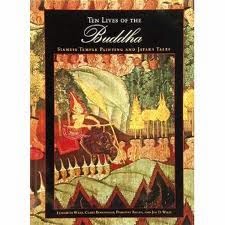
The split is a lot more
complicated because Theravada Buddhism is based on some central concepts like
anicca-dukkha-anatta – and this here book only quotes two, dukkha seen as
dissatisfaction and anicca seen as the transitory nature of things. We
understand that the third one, anatta or non-self for anything and/or non-soul
for human beings, is not mentioned because it is both the negation of any
permanent or stable self for man and the negation of the existence of any
divine part in man. An individual is non-permanent, in constant change, hence
in constant chase after satisfaction (sukha) that turns into dissatisfaction
(dukkha) as soon as satisfaction is reached, and then the chase for
satisfaction starts all over again. An individual cannot have a “self” in such
conditions, what’s more any divine part in him/her, a soul in other terms,
something that can transmigrate from one person to another via death and
rebirth. If this concept were kept here, obviously transmigration or
reincarnation would be impossible. What’s more God does not exist in Theravada
Buddhism, and Mahayana Buddhism needs that concept of God, if not gods, the
multiple gods of an older form of Brahmanism.
But that does not explain the
extreme form of Tibetan Buddhism with the reincarnation of the original Buddha
in the Dalai Lama, knowing that the Buddha himself is asserted as the
reincarnation of older Buddhas. Tibetan Buddhism states a beginning that
Theravada Buddhism does not state. And what’s more with the Tibetan Book of the
Dead, it goes a lot farther in that divine line of a vision of the world that
is in deep contradiction with canonical Buddhism.
2- The book also states, on the
basis of similarities between these tales and tales in the Old Testament and
Aesop’s fables that they all had a common Indo-European source. All that is
fairly mixed up since the Old Testament is in Hebrew from the Israeli Semite
culture. Aesop is Indo-European for one but the extension the book does to
Chaucer, La Fontaine and other western Indo-European writers is totally
anachronistic.
In fact we have to go deeper and
see that Indo-European languages (and cultures) are only a cousin branch to
Indo-Aryan languages (and cultures), and that the common ancestor, and there is
one, is in fact in the tradition that established itself on the Iranian plateau
after the last migration out of Africa somewhere around 35,000 years ago, maybe
a little bit before, and whose surviving dead language of the period of the two
migrations, one to the west and one to the east, is Sumerian in Mesopotamia.
The direct descendant of this common source is probably Farsi. The
Indo-European migration only came down west around 10,000 years BCE, maybe
slightly later, after the Ice Age, when water is starting to rise. The
Indo-Aryan migration came down east at the same time or maybe slightly earlier.
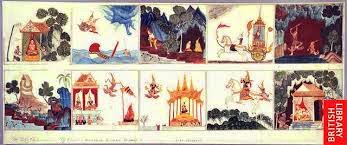
The Indo-European tradition meets
with two other traditions in Mesopotamia and
beyond. The Turkic tradition they will push aside to go through both Anatolia
and the Caucasus to go farther into Europe
where they will never represent more than 20-25% of the European population at
the time and till today in European DNA. The remaining 75-80% were and thus
still are of Turkic origin and tradition.
This Indo-European descending
migration mixes in Mesopotamia and the Levant
with various Semitic traditions, both Jewish or Arabic. The best example is the
Sumerian writing system invented by the Sumerians for the Sumerian language and
merchants and yet often called Akkadian because in Mesopotamia
most of the scribes were Akkadians and the Akkadians adopted that writing
system of a synthetic-analytic language for the Semitic Akkadian.
If there is a connection between
these Jakata tales and the Old Testament or old Greek literature it has to be
found either in an older and common form of that Iranian Plateau tradition,
though that would not be a genetic source for Semitic culture that is older and
then it could only be some borrowing, or in the transmission or recuperation or
heritage of older cultural traditions from pagan societies that developed
before Indo-European or Indo-Aryan cultures, and eventually back to Africa from
where everything has had to come.
3- This book is an art book and
as such a beautiful one in the pictures of the numerous paintings given as
illustrations of the ten last Jakata tales.
We have to note the order of
these ten Jakata tales is the order in the bot of Wat Suwannaram, Thonburi in Thailand. It is
not the canonical order of the Pali Text Society’s full translation.
We have to note too that the book
only contains the “stories” of these Jakata tales, but none of the commentaries
or conclusions going along with all the tales in the canonical version.
The paintings are representing or
retelling the tales but not necessarily scene by scene in the telling
chronology. I would even say all the episodes of a Jakata are in one painting,
or set of paintings but in an order that has little to do with linear right to
left or left to right horizontal or linear top to bottom or bottom to top
vertical orders. It is a lot more complicated and contains circular patterns
and hierarchical organizations both for hierarchically superior people or
chronologically later elements, the end dominating the tale itself.
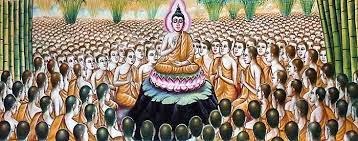
This is typical of samsara or
samsaric thinking. The value, the story, the moral, or any other word you may
want, emerges from a complete capture of the multiple representation that contains
no real organized cause and effect, now and then, here and there logic, though
the bodhisatta, the reborn being aspiring to become Buddha or enlightened is
often represented as such though in the tale he is unknown to be a bodhisatta
by the people around him. The point of view of the story-teller seems to take
over the paintings and to inject some knowledge that is anachronistic for the
people in the tale though totally ideologically oriented towards the people
beholding the paintings. These paintings are Buddhist in their lay out itself
though with an intentional orientation towards the audience.
4- It is difficult to follow the
stories and analyze them as a whole because they are translated and I am afraid
the Pali concepts or words for the Buddhist concepts are not properly rendered.
We have the story but told in a causal language as a causal chain of events
that should not even be a chain of events but the emergence of successive
events that are only emerging though they could have not emerged from a
development reached just before.
The last Jakata is typical.
Vessantara is born as a
bodhisatta endowed with the desire to give to other people, no matter what.
For a long time he will give alms
and money to those who need some, but he needs to always give more and he will
thus come to the point that he will give to please people, hence he will give
what people want because it pleases them. When he reached this point he will
necessarily accept to give the white elephant that brings wealth and prosperity
to his own people whose king or crown prince he is. And all these people will
sink into dukkha and dissatisfaction. A real accumulation of dukkha, thirst,
hunger, famine. There emerges anger and there emerges the false solution: to
exile the “generous giver,” his wife and his two children.
Then they emerge into a new
territory: exile. The proof that the story is not causal is in the fact that he
will go on giving. First the four horses of their chariot to four unknown
Brahmins. Then the chariot itself when a fifth Brahmin comes up and asks for
it.
In this predicament he invents a
new way to justify his giving: he gives to liberate himself of his possessions
to enable himself to get on the road to nibbana – called here omniscience. It
is not causal. The accumulation of acts of giving sees the emergence of
deprivation and this deprivation when accumulating sees the emergence of a
totally fake new objective: to liberate oneself of one’s possessions no matter
whether it creates dissatisfaction or not around oneself, because the objective
is just plain giving. This is in fact nothing but “tanha” or excessive
attachment. The Buddha condemned that type of excessive attachment to
supramundane entities, just as bad as excessive attachment to any other
positive or negative fact or behavior. As such this story shows in the extreme
advancement of that excessive attachment that we have to react against “tanha,”
the worst curse that can befall a man or a woman.
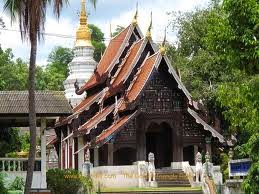
When we know that in Pali there
is no verb for “have” or “give” we understand that possessing anything is
unthinkable and any object is entrusted to our safe keeping in order for us to
entrust it to someone else. Transient attribution of any possession or good to
a transient possessor who must attribute it to any other transient possessor.
This curse leads out bodhisatta
to becoming an ascetic since he ends up possessing nothing, imposing this fate
onto his wife and his children. The wife agrees, but what about the children?
But then the tale becomes
vicious. He gives away what he has no right to give away because there is no
possession of this or these “objects.” He gives away his own children for them
to become slaves and his own wife for her to become the woman of an old Brahmin
in spite of and against her own vow to be absolutely sexlessly pure. In other
words she will become a concubine or a prostitute.
And it is only then that not
anything causal but a peripeteia emerges: The king of Sivi – their original
country – recognizes the children and liberates them, and the old Brahmin was
in fact a god under disguise and the submissive wife is saved from repetitive rape. The king of Sivi
then will look for Vessantara, find him and bring him back reinstating the four
into what the course of events that had let emerge wave after wave after wave
of surfing events, had taken them away from.
Life is an ocean of millions of
waves and each one precedes in its emergence the emergence of the next one
without causing it just as it had followed the previous one without being
caused in any way.
Samsara is this ocean of
paticcasamuppada, dependent origination.
Conclusion
A very fascinating book that
nevertheless misses the very point contained in its original language, Pali,
translated here into English. It never identifies that excessive attachment to
giving as what it is: “tanha,” meaning an absolute blocking element on the path
to enlightenment. Free yourself of this tanha to giving and you might get on
the eightfold path to nibbana. There is no other way.
What is more, the tales around or
behind the paintings, hence the stories, might have been in Thai or Mon and not
Pali, two languages from another family. Though Pali had no writing system and
could be written with the local writing system, for instance that of Ram Khamhaeng
found on the eponymous inscription in Sukhothai, capital of the Sukhothai
Empire. Pali is an Indo-Aryan language whereas Thai or Mon are not and are to
be linked to the vast Tibetan-Burmese or Khmer-Burmese families and beyond the
isolating languages of Asia. That might have
had some impact on the reception of the stories and their illustrations. A
story is in the eyes of the beholder or the ears of the faithful.
Dr Jacques COULARDEAU
# posted by Dr. Jacques COULARDEAU @ 4:17 PM
0 comments


